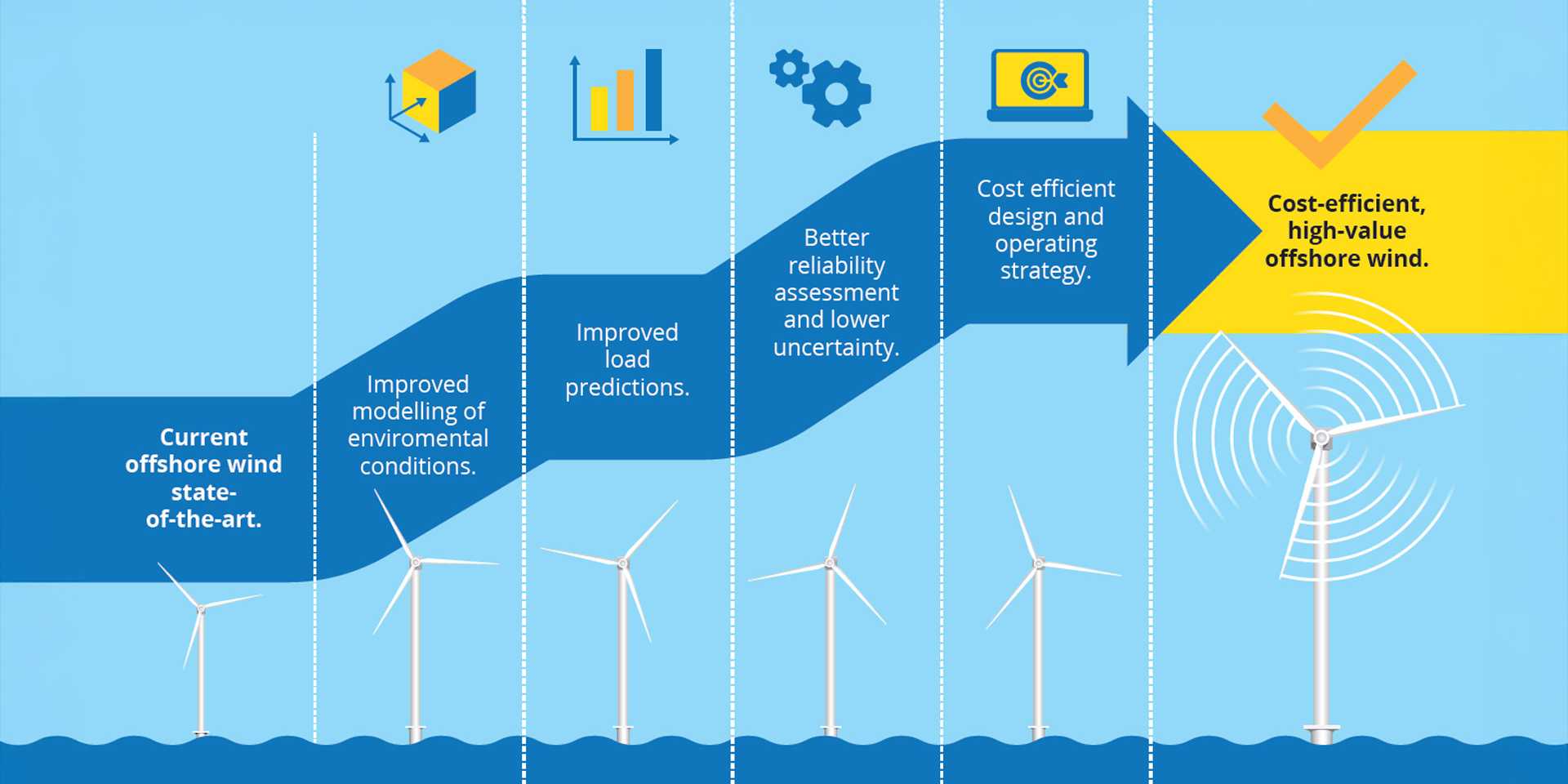HIPERWIND reduces offshore wind energy costs by up to 9 percent
The EU wants to increase offshore wind energy capacity from the current 12 gigawatts (GW) to 450 GW by 2050. To help achieve this goal, the international research initiative HIPERWIND has developed innovative simulation models that reduce the levelized cost of energy for wind turbines by up to 9 percent. From ETH Zurich, the Chair of Risk, Safety and Uncertainty Quantification at the Department of Civil, Environmental and Geomatic Engineering contributed to the project.

Offshore wind energy has long been seen as a cornerstone for renewable energy production due to its capacity for high energy yields. However, the harsh ocean environment and high wind speeds make turbine construction and maintenance costly, raising the levelized cost of energy (LCOE). Led by a consortium of academic and industry leaders, HIPERWIND aimed to reduce the financial costs and increase the energy production of offshore wind turbines.
Central to the project’s success was minimising the overuse of materials in turbine construction, a major cost driver. By better quantifying uncertainties in areas such as environmental conditions and load response, researchers were able to reduce the need for conservative safety margins. This not only reduced upfront capital expenditure – which accounts for around 30 percent of the total LCOE – but also improved operational efficiency. The project also demonstrated practical cost-saving strategies, such as scheduling maintenance during periods of low electricity prices, further reducing energy costs.
Applications beyond wind energy
The methods developed in this initiative have the potential to be transformative beyond the original scope of the project. For example, the Institute of Structural Engineering at ETH Zurich has been exploring applications of dynamic surrogate models developed in the HIPERWIND project to address other types of societally critical issues. These include assessing the seismic vulnerability of complex civil and industrial structures, and optimising the design of high-rise buildings under highly uncertain dynamic wind conditions such as tornadoes.
"Our work has focused on developing a new methodology from scratch to deal with uncertainties in high-dimensional inputs and responses," explains Senior Scientist Stefano Marelli from the Chair of Risk, Safety and Uncertainty Quantification. "By using advanced surrogate modelling techniques, we have accelerated algorithm development and enabled seamless collaboration between partners. This has applications far beyond wind energy, extending to seismic engineering and other domains where uncertainty management is critical."
Real-world case study
The project used a real-world case study involving the Teesside offshore wind farm off the coast of England, owned by project partner EDF. Data and models specific to the wind farm were used to identify and quantify uncertainties in turbine design. The team then assessed whether the improved knowledge could reduce costs if the wind farm were rebuilt.
The HIPERWIND consortium consisted of seven partners from both academia and industry: DTU Wind and Energy Systems, Chair of Risk, Safety and Uncertainty Quantification at ETH Zurich, EDF, IFPEN, EPRI Europe, University of Bergen and DNV. This project was funded by the European Union’s Horizon 2020 Research and Innovation Programme and ran for 3.5 years. It was led by DTU Wind.